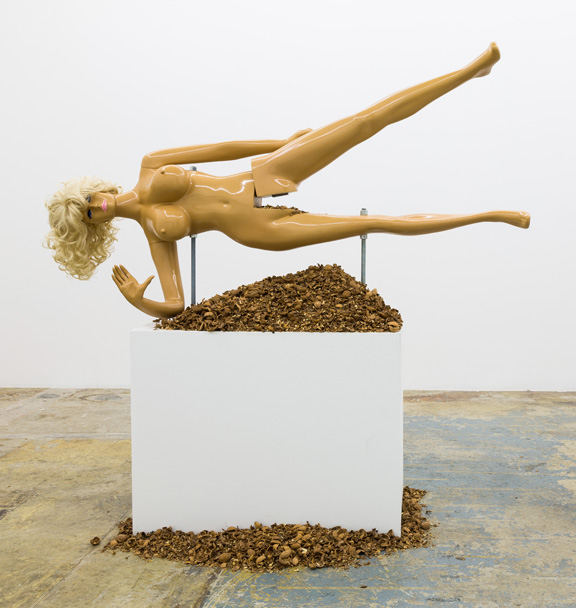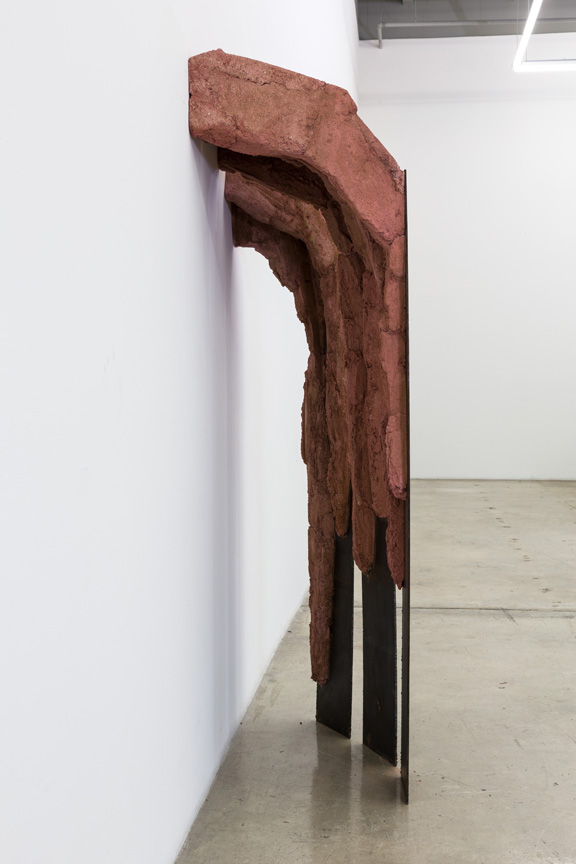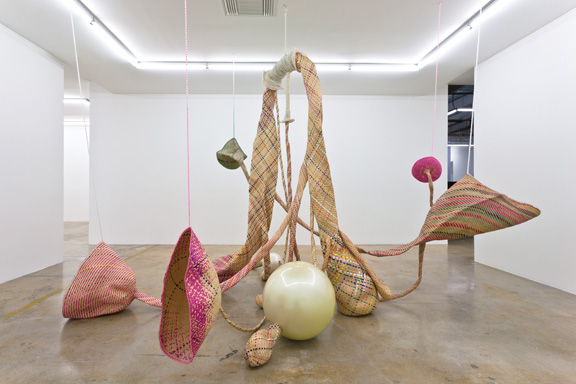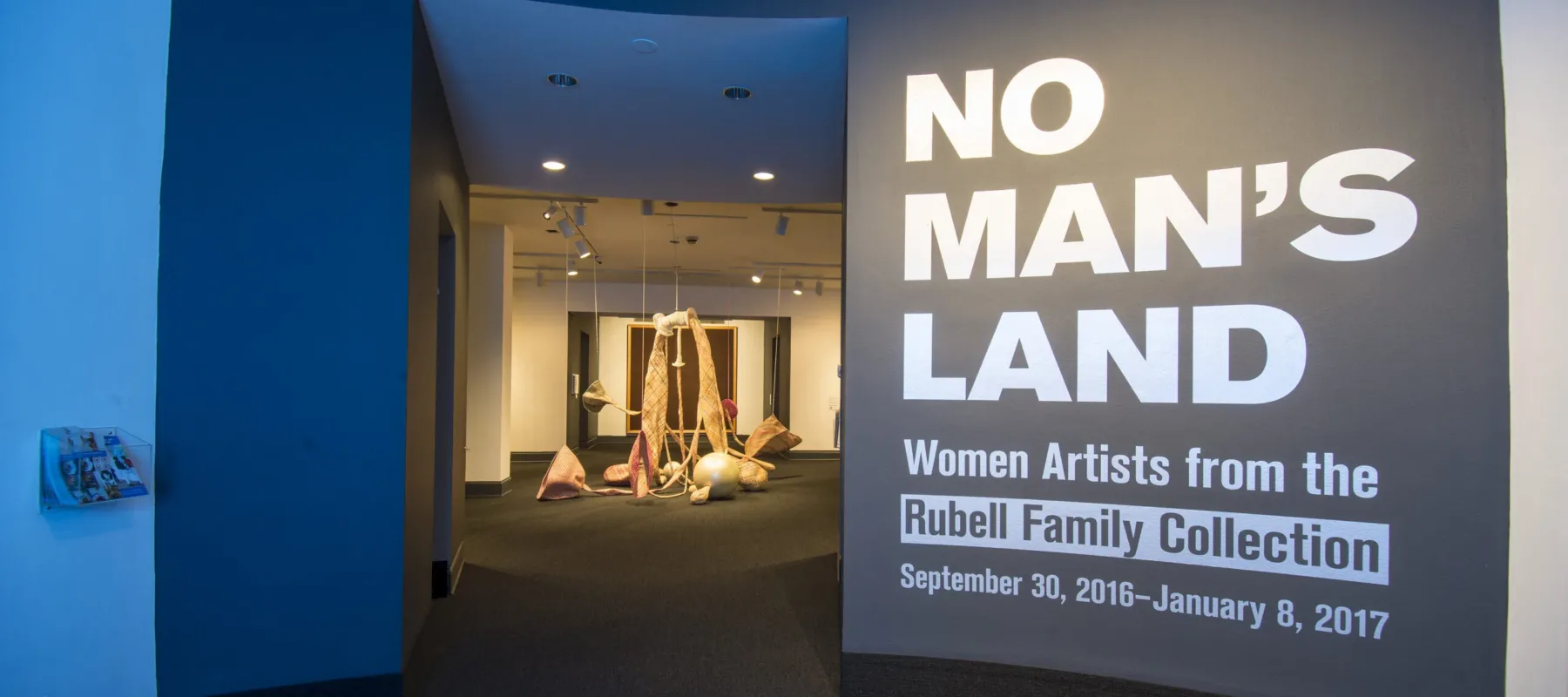Contemporary large-scale paintings and sculptural hybrids are on view in NO MAN’S LAND: Women Artists from the Rubell Family Collection. The exhibition imagines a visual conversation between 37 women artists from 15 countries exploring images of the female body and the physical process of making. Theatrical sculptural works by Jennifer Rubell, Cristina Iglesias, and Maria Nepomuceno encourage visitors to move around the gallery space.
What’s On View?

Jennifer Rubell’s Lysa III, 2014
As a conceptual artist, Jennifer Rubell (b. 1970, New York City) experiments with a variety of mediums, and many of her works involve food and the social and interactive nature of eating. Rubell says, “I’m interested in making art that people want to see and can use to understand what’s happening inside contemporary art. The minute you give people something they can participate with, it gives them access to it, because they’re a part of it.”
Lysa III exemplifies her playful approach. Inspired by a gag nutcracker of Hillary Clinton, this sculpture is a fully functional nutcracker meant to be operated by visitors. The exaggerated female form and destructive action epitomize popular caricatures of women as sexualized objects or aggressively anti-male.

Cristina Iglesias’s Untitled, L-4, 1986
“I am interested in making pieces that are sensitive to the space they occupy, working with it to create meaning,” says Cristina Iglesias (b. 1956, San Sebastián, Spain). Iglesias is renowned for her public architectural installations.
Iglesias transforms minimalist sculpture’s tough materials into expressive forms. The pink-hued, hand-formed concrete arches of Untitled, L-4 suggest both physical gestures and the look of flesh.
Appearing simultaneously time-worn and industrial, the sculpture seems as if it came from another realm. Like Iglesias’s more recent large-scale installations, this early work conjures a theatrical environment, a dream-like fictional world within an existing space.
Maria Nepomuceno’s untitled work, 2010
“It’s always my intention to evoke the pure vital energy,” says Maria Nepomuceno (b. 1976, Rio de Janeiro). The artist creates labor-intensive biomorphic sculptural forms dominated by spiral forms, alluding to naturally occurring spirals from DNA to galaxies. “For me the spiral means infinite transformation. It always makes the same movement, but always into a new path.”

The artist works on a large scale to emphasize the relationship of sculpture to space and to envelop the viewer with the sensation of a powerful life force. Accented with beads purchased from Carnival event suppliers, the straw portion of this sculpture is woven using traditional techniques. Nepomuceno learned weaving from indigenous people in the Huni Kuin tribe in northwest Brazil, near her ancestral homeland.
Visit the museum and explore NO MAN’S LAND, on view through January 8, 2017.
